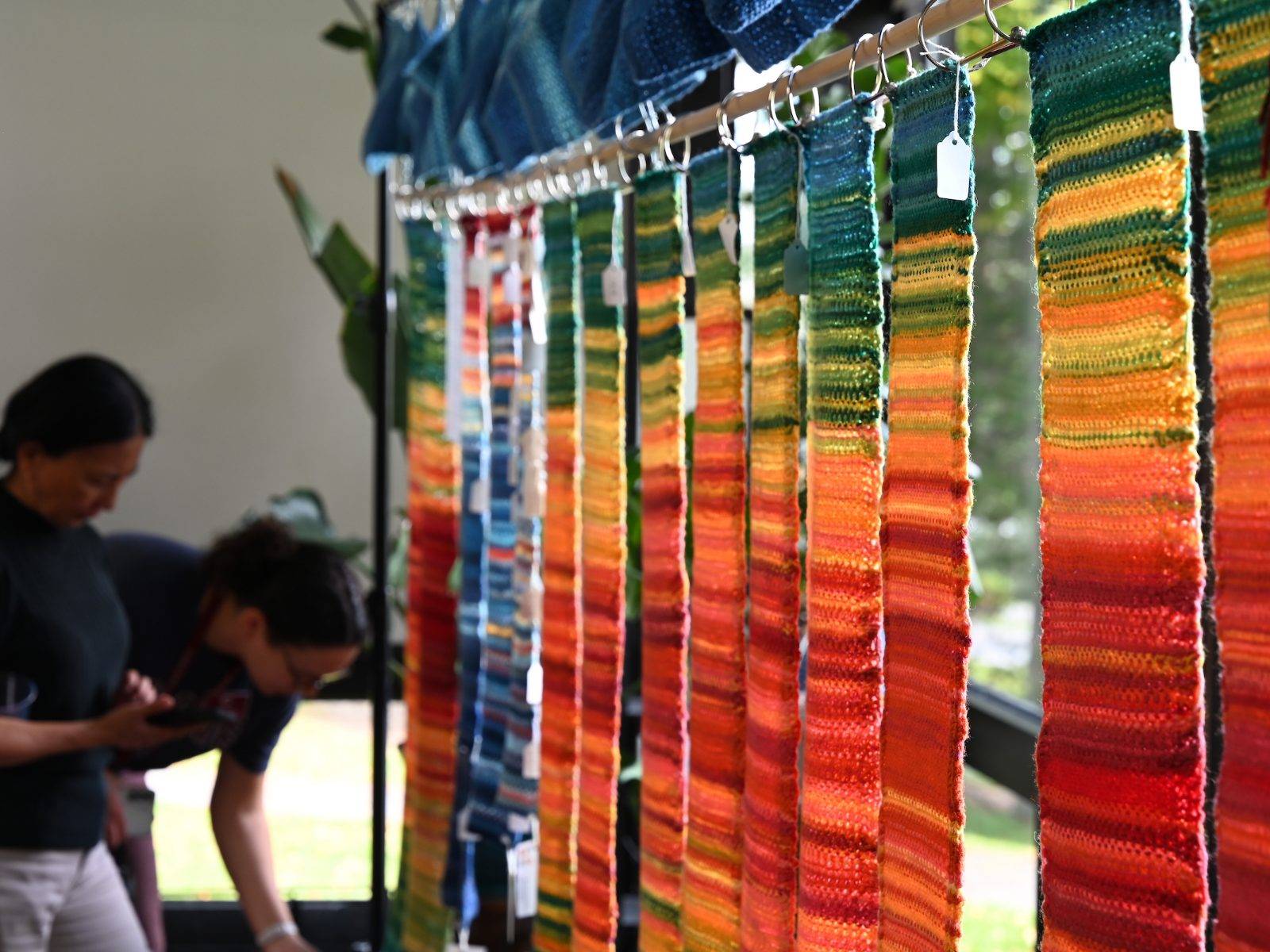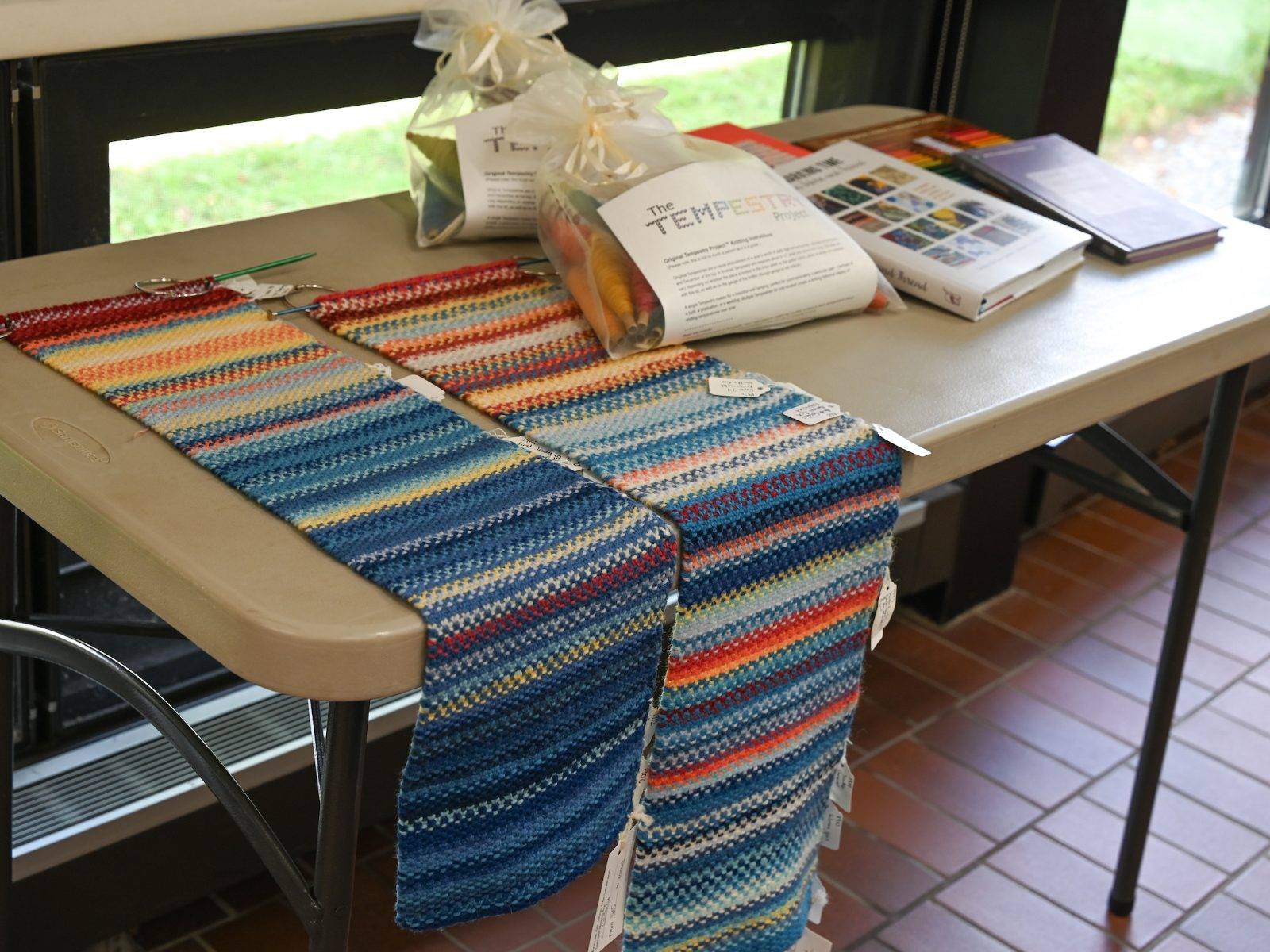Crafters from around campus have begun working on individual Tempestry projects, textile-based depictions of the climate during significant years in Colgate University’s history. The projects will be displayed during Arts, Creativity, and Innovation Weekend 2026 in the Longyear Museum of Anthropology’s exhibit Tempestry: The Art of Climate Data.
The Tempestry Project, created by Emily McNeil and Asy Connelly, scales down the vast climate change conversation into something smaller and more tangible, while building community through fiber art temperature data representation projects.
Thirty-three kits will be used to create the Tempestries for the exhibition, and about a third have already been distributed. Each kit includes balls of wool yarn of various colors as well as instructions. A chart details the temperature and related color for each day of that year — January at the bottom and December at the top. Cards included in each custom kit contain the location, year, coldest and hottest temperatures and dates, and the primary weather station.
Professor of Geography Mike Loranty organized data collection for the project: daily temperatures come from the National Oceanic and Atmospheric Administration, with additional data from Weather Underground and local weather stations.
“This cross-campus collaboration between Entrepreneurship and Innovation; University Museums; the Residential Commons; environmental studies; geography; and women’s, gender, and sexuality studies is such an exciting example of the liberal arts ideal and an embodiment of our commitment to learning where we live,” said Residential Commons Director Abby Palko, who is helping to coordinate the project.
Dates featured in the project are years that Colgate has designated as benchmarks in its history as an institution. They include:
- 1918 — Colgate Memorial Chapel is built, given to the university by Mary Colgate, sister of James C. Colgate, who gave it in memory of their father, James B. Colgate.
- 1935 — Colgate runs its first Washington Study Group. On the first study group offered in D.C. by any college or university — and Colgate’s first semester-long, faculty–led off–campus program — students are soon making contact with people who make and interpret history.
- 1968 — A 100-hour sit-in over racial discrimination on campus launches a wave of student activism.
- 1994 — The Center for Women’s Studies, an academic and social space for discussing feminist topics, opens.
- 2019 — Colgate’s Bicentennial
McNeil and Connelly visited campus for an ENST Brown Bag on Sept. 12. They shared the history of the initiative and gave attendees a chance to view examples of finished Tempestry projects, which can be crocheted or knitted and typically measure 8”–12” wide and about 5’–6’ long, depending on the gauge of the yarn.
“I just thought it was so interesting looking at everything and being able to see how things change over time,” said Carmen Reed ’28, who attended the event and will be crocheting temperatures from 1928, the year Colgate took the first steps leading to the creation of the Liberal Arts Core Curriculum.
On Friday, students gathered with Senior Residential Fellow Marissa Bordonaro in the Pinchin Lounge for a Tempestry Project interest workshop to learn more about the project — and perhaps receive a quick crochet tutorial. Workshops will continue throughout the semester and into the spring — University Museums will receive completed projects by March 1 to build the exhibit.
“This project manages to tap into a lot of different interests,” Bordonaro says. “Everyone involved seems to be attracted to a different aspect, from the climate change data to the desire to learn to crochet to wanting to be part of the museum exhibit.”
“One of my goals through partnerships like this is to highlight the broad range of entrepreneurship for our students,” says E&I Director Carolyn Strobel-Larsen, who was instrumental in bringing the Tempestry Project to Colgate. “The founders of the Tempestry Project didn't set out to start a business — they simply wanted to raise awareness about climate change. Through conversations with people who were interested in participating in climate activism, that idea evolved into a business. It’s the ultimate entrepreneurial journey.”
Participation in the Tempestry Project is open to students, faculty, staff, and community members. All are welcome to attend a project workshop launch at 2:30 p.m., Friday, Oct. 24, in the Pinchin Lounge.

